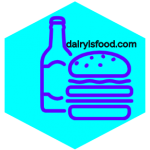Low Carbohydrate diets: How it works
In low-carb diets, instead of carbohydrates providing the primary source of calories and energy, fats and proteins do. Keeping our blood sugar and insulin levels low, we can train our body to burn its stores of fat. Also, since low-carb diets are high in protein, and protein helps us feel full for longer, this enables us to eat smaller portions, reduce snacking between meals, and cut down our overall calorie intake.
Ketosis is the dynamic metabolic state that happens when you consume very low carb, protein, and high-fat diet, making the body transform from glucose as the primary energy source and using ketones. Ketones are produced when the body starts burning fat, and they’re primarily used as an alternative fuel source when glucose isn’t available.
Ketone bodies provide an alternative fuel for the brain, heart, and most other organs when serum glucose and insulin levels are low—i.e., on a deficient carbohydrate diet. Ketone bodies are preferred over glucose by the heart and can be used as efficiently as glucose by most brain portions. There is a growing body of material and research supporting their beneficial effects on aging, inflammation, metabolism, cognition, and athletic performance. – Franziska Spritzler
What to eat?
Anyone planning to reduce one of the leading food groups significantly needs a diet strategy that will compensate for the losses and their effects. While protein-rich foods and natural fats can replace carbohydrates as energy sources, high-protein diets often lack fiber, essential for healthy digestion, and maintaining adequate cholesterol levels. Including generous servings of vegetables such as broccoli, cauliflower, and lettuce in your diet can boost fiber intake, contribute micronutrients, and add bulk to meals.
Bread, pasta, grains, and starchy vegetables are off-limits. In some extreme cases, many fruit and vegetables are banned at the start of the diet. Protein and fat are unlimited.
Caution: Limiting refined carbohydrates is sensible as they are energy-dense and easy to overeat but cutting out fruit and vegetables is never wise. It can help short-term weight loss, but longer-term consequences are not clear.
Daily diet
Combining protein-rich foods with bulky low-carb vegetables makes it relatively easy to eliminate carbohydrate-rich foods such as pasta, bread, rice, and sugary foods from each meal of the day.
How the body uses carbohydrates
When we eat carbohydrates, our digestive tract breaks them down into sugars, absorbed into the blood. Glucose is used directly by our various organs and muscles as a source of energy. Fructose, a simple fruit sugar that bonds with glucose to make table sugar, can only be processed by the liver. People with high fructose diets are at higher risk of type 2 diabetes, possibly because fructose is more likely to be converted into stored fat in the body.
Carbohydrates are mainly two types, i.e., sugars and starches. These carbohydrates are the primary source of fuel for our bodies. When we choose carbohydrate-rich foods, our best carbohydrates are fruits, vegetables, whole grains, and legumes. These foods are also rich sources of healthy vitamins, minerals, phytochemicals, and fiber. But like all calories we consume, extra calories generated from carbohydrates beyond those we need are converted to fat and stored in our body as fat cells.
Benefits of low Carbohydrates diets
It is observed that following “low-carb” diets, i.e., limiting our consumption of carbohydrates, can help us to lose weight and avoid the side effects of erratically fluctuating blood-sugar levels. The high quantities of carbohydrates containing foods consumed are broken down into large amounts of blood sugar. Breaking of sugar leads to a rise in insulin’s need, a hormone that acts to push sugar from the bloodstream into our cells. The sugar is then broken down into energy for the body.
The more carbohydrates are eaten, the more insulin is needed to deal with blood glucose’s resulting elevations. In contrast, when carbohydrate intake is reduced or toned down and protein intake is moderate, blood glucose and insulin need are reduced. This reduction of carbohydrates causes the shift towards fat instead of glucose to fuel body cells. As a result, stored fat is more easily liberated from fat tissue, and there is an increase in ketogenesis, the process in which the liver creates ketone bodies from fatty acids and releases them into the bloodstream so that the brain, muscles, and other tissues can use them as ab alternate fuel. Ketone bodies are metabolic by-products that result when the body shifts fuel sources and burns fat more readily than carbohydrates.
- Natural hunger and appetite control
- Effortless weight loss and maintenance
- Mental clarity
- Sounder, more restful sleep
- Normalized metabolic function
- Stabilized blood sugar and restored insulin sensitivity
- Lower inflammation levels
- Feelings of happiness and general well-being
- Using fat stored in the body as the source of fuel.
- Reduced acne breakouts and other skin conditions
Let us understand the Carbohydrates.
Carbohydrate molecules consist of carbon, hydrogen, and oxygen atoms, often in hexagonal or pentagonal rings.
If the rings are in ones or twos, they are sugars, but if the rings combine into unbranched or branched chains, they become starches and other complex carbohydrates. Very long, indigestible chains make up dietary fiber. In the body, sugars and starches are converted into sugar glucose, our body’s primary energy source.
The carbohydrates are a macronutrient found in most foods we eat. This group includes simple sugars (added sugar used daily in day-to-day activities) and complex forms of carbohydrates such as starches (found in pasta, bread, cereal, and in some fruits and vegetables), which are broken down during metabolism to produce simpler sugars.
The primary function of the simple sugars and starches in the foods is to produce calories for the body’s energy. The simpler sugar glucose is required for the brain’s energy needs, while muscles utilize glucose for short-term bouts of activity.
The liver and muscles convert small amounts of the sugar and Starch that we eat into storage for the body in the form of Glycogen. After a long, intense workout, muscle energy in the form of glycogen stores must be restored. Both simple sugars and starches provide about four calories per gram of energy. As carbohydrates serve mainly as sources of calories (and we can get calories from other macronutrients), no specific daily intake requirement has been set. Health experts believe that we should obtain most of our calories (about 60 percent) from carbohydrates. Our requirements depend on age, sex, size, and activity level.
In contrast to the other carbohydrates, fiber (a substance found in bran, fruits, vegetables, and legumes) is a type of complex carbohydrate that cannot be readily digested by our bodies. Even though it isn’t digested, fiber is essential to our health. Health professionals recommend 25 to 30 grams of fiber daily.
Complex Carbohydrates from Plant Origin
Complex carbohydrates mainly originate from plant sources. These carbohydrates are long chains of molecules of the simple sugar glucose. The complex carbohydrates originating from plant foods can be divided into two major groups, i.e., starch and fiber.
Starch is the form of carbohydrate that is found in grains, some fruits and vegetables, legumes, nuts, and seeds. It provides energy for newly sprouting plants.
The fiber in the form of carbohydrates is a tougher material. It encloses the coat of seed and other structural components of the plant. Starches are digested by our bodies into their constituent glucose molecules and used for energy, whereas fiber is not digested and is primarily used in Gut by Gut bacteria.
Like other simple sugars, Starch provides four calories per gram, whereas fiber (sometimes called non-nutritive fiber) provides no calories as the body does not digest it. The role of starches in our diets is mainly to provide energy like simple sugars.
Fiber is actually a family of substances found in fruits, vegetables, legumes, and grains’ outer layers. Scientists divide fiber into two categories: those that do not dissolve in water (insoluble fiber) and those that do (soluble fiber).
Insoluble fiber, also called roughage, includes cellulose, hemicellulose, and lignin, found in vegetables, nuts, and some cereal grains. Soluble fibers include pectin, found in fruits, and gums, found in some grains and legumes.
Fibre-rich diets, which include large amounts of whole-grain foods, legumes, fresh vegetables, and fruits, have been linked with a lowered risk of many diseases originated from gut disorders for lack of fiber-rich diets.
Health and Nutrition scientists are just beginning to understand the role of dietary fiber in maintaining health. Fiber appears to help the digestive system free of unwanted substances that could promote cancer and other Gut related ailments and to maintain regularity and prevent disorders of the digestive tract. Fibre also provides a sense of fullness that may help reduce overeating and unwanted weight gain. Diets rich in fiber and complex carbohydrates have been associated with lower serum cholesterol, lower high blood pressure, coronary artery disease, and cancer types.
Types of Plant Fibres
Soluble Fibre-dissolves in water and becomes gummy
| GUMS | PECTINS |
| Barley | Carrots |
| Legumes | Citrus fruits ,grapes |
| Oats | Apples |
Insoluble Fibre—Called as roughage
| CELLULOSE | HEMICELLULOSE | LIGNIN |
| Whole wheat flour | Bran | Woody portions of plants such as stem etc |
| Nuts | Vegetables | Wheat |
| Vegetables | Fruits | Fruits with edible seeds, such as raspberries and strawberries |
Conclusion
All diets consist of three essential macronutrients: fats, Carbohydrates found in Starch and sweets, and protein found in meat, dairy, eggs, and nuts. Anyone planning to reduce one of the leading food groups significantly needs a diet strategy that will compensate nutrients from other sources for bodily functions. While protein-rich foods and natural fats can replace carbohydrates as energy sources, high-protein diets often lack fiber, which is essential for healthy digestion and maintaining adequate cholesterol levels. Including generous servings of vegetables such as broccoli, cauliflower, and lettuce in your diet can boost fiber intake, contribute micronutrients, and add bulk to meals.

